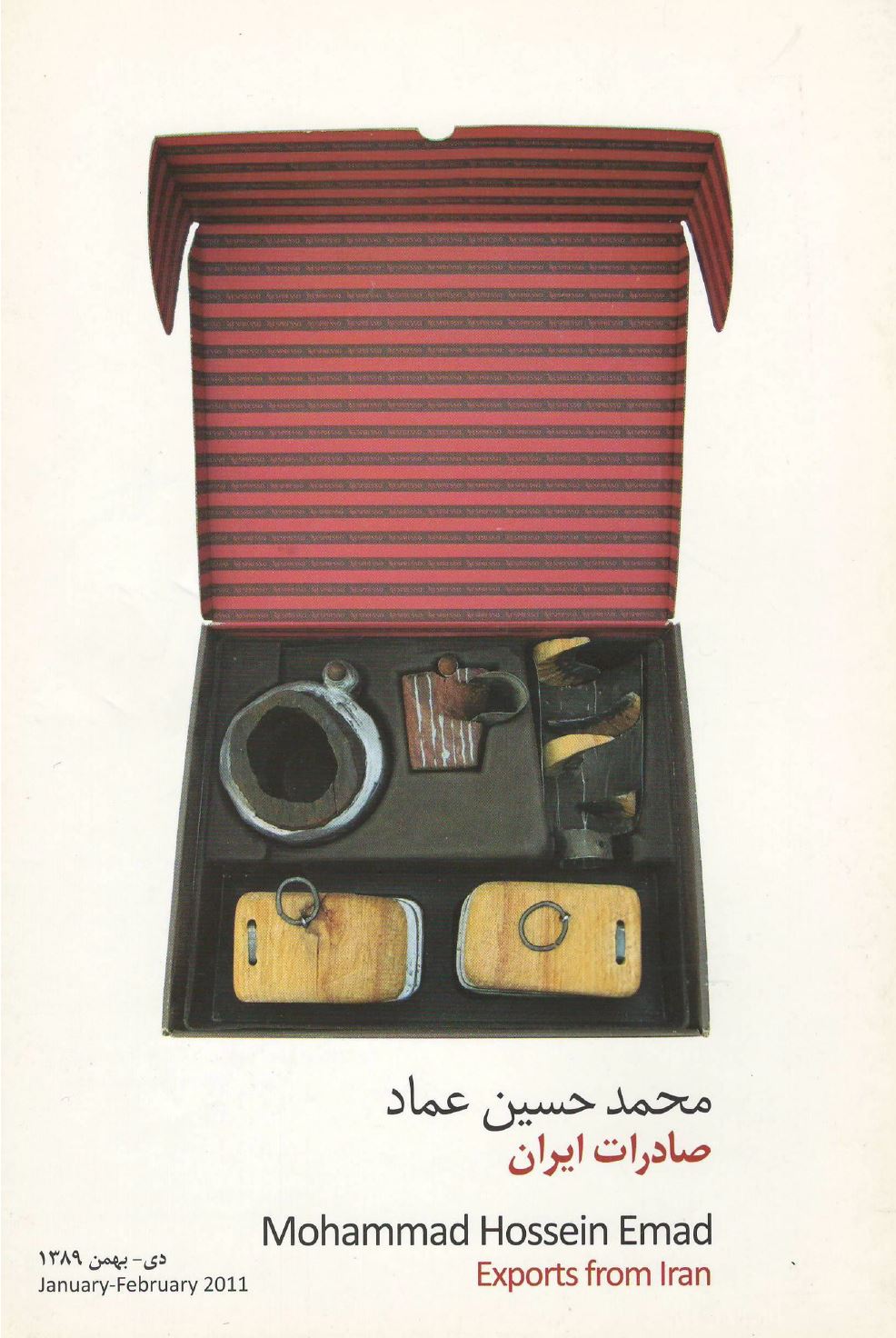Exports from Iran

Exports from Iran
The role of everyday life is becoming ever more central in contemporary Iranian art practice, every artist dealing with the issue in a particular way. In his new series of sculptures, Mohammad Hossein Emad displays an amazing, innovative shift to the issue of commodity and packaging. The negative spaces of Styrofoam packaging have made casts for amazing sculptural structures, and due to the imposed formal limitation, the artist has found free room for humor, absurdity and playfulness.
The viewers, on the other hand, experience a sort of anxiety beyond their pleasure and surprise, as the artist has again encountered them with an unsolvable puzzle. They hopelessly try to assemble the parts to make up the final object, but the final picture appears absurd and illogical. Each part is a puzzle, at the same time funny and disturbing, strange and impenetrable. They do not evoke any familiar, functional object and their logic cannot be decoded. One tries to imagine another world with other primary principles by which these parts could join together and function.
«Exports» is how the artist calls these absurd structures. He conceives them as what we export to the world, out of our institutions and worldviews: Packages of Thoughts, beliefs and customs, satirical combinations of tradition and modernity, and vague, irrational phenomena.
Emad’s favorite techniques can be well found in these sculptures: hammering, nailing, clinching, etc. Mysterious holes can be found in many of the pieces, usually concealed by a metal mesh or a pair of lids. The metal penetrates deeply into the wood, becoming integrated into its texture.
Despite all their formal and technical consistency, Emad’s Sculptures reveal a significant semantic turn in each period: Sculptures which should be looked «through», not «at», sculptures making sounds, sculptures responding subtly to the viewers> presence, and sculptures weirdly growing in the hollow spaces of packaging foams. He ceaselessly tries to enforce his worldview on the modern world, and the result is each time a new surprise.
Helia Darabi
Winter 2011
